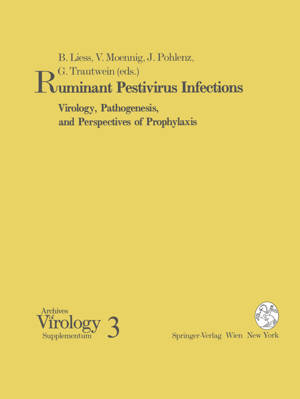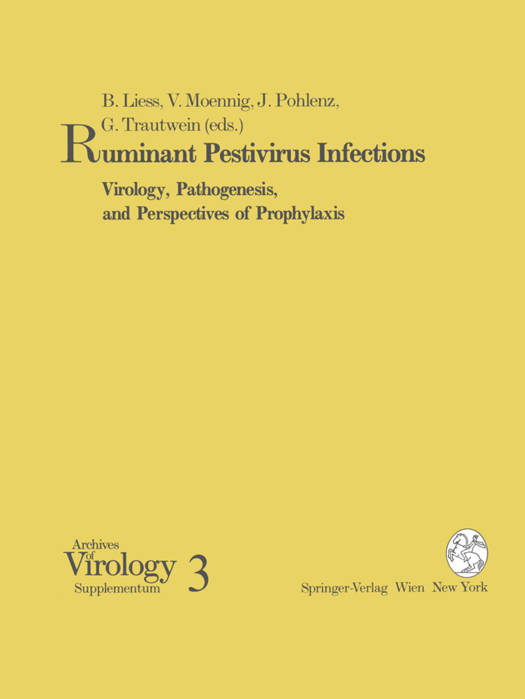
- Afhalen na 1 uur in een winkel met voorraad
- Gratis thuislevering in België vanaf € 30
- Ruim aanbod met 7 miljoen producten
- Afhalen na 1 uur in een winkel met voorraad
- Gratis thuislevering in België vanaf € 30
- Ruim aanbod met 7 miljoen producten
Zoeken
Ruminant Pestivirus Infections
Virology, Pathogenesis, and Perspectives of Prophylaxis
€ 52,95
+ 105 punten
Omschrijving
Findings concerning various clinical manifestations in cattle and sheep have made it clear that pestivirus infections in ruminants have an economic impact similar to hog cholera. Early data justified the classification of pestiviruses as a genus of nonarthopod-borne togaviruses. Since pestiviruses are difficult to work with, progress in understanding the virus and disease gradually came to a standstill because conventional techniques failed to yield further insights. About ten years ago interest in pestivirology was revived by strong impulses of modern biotechnology and a breakthrough in pathogenesis research, i.e. in vitro translation of BVD viral proteins and the ex experimental reproduction of mucosal disease in cattle. In order to summarize and discuss these exciting developments, an international community of pestivirus researchers came together in June 1990 in Hannover (Federal Republic of Germany) for the Symposium "Ruminant Pestivirus Infections: Virology, Pathogenesis and Perspectives on Prophylaxis". This book is a selection of papers presented at this symposium.
Specificaties
Betrokkenen
- Uitgeverij:
Inhoud
- Aantal bladzijden:
- 271
- Taal:
- Engels
- Reeks:
- Reeksnummer:
- nr. 3
Eigenschappen
- Productcode (EAN):
- 9783211822791
- Verschijningsdatum:
- 23/09/1991
- Uitvoering:
- Paperback
- Formaat:
- Trade paperback (VS)
- Afmetingen:
- 210 mm x 279 mm
- Gewicht:
- 644 g

Alleen bij Standaard Boekhandel
+ 105 punten op je klantenkaart van Standaard Boekhandel
Beoordelingen
We publiceren alleen reviews die voldoen aan de voorwaarden voor reviews. Bekijk onze voorwaarden voor reviews.










